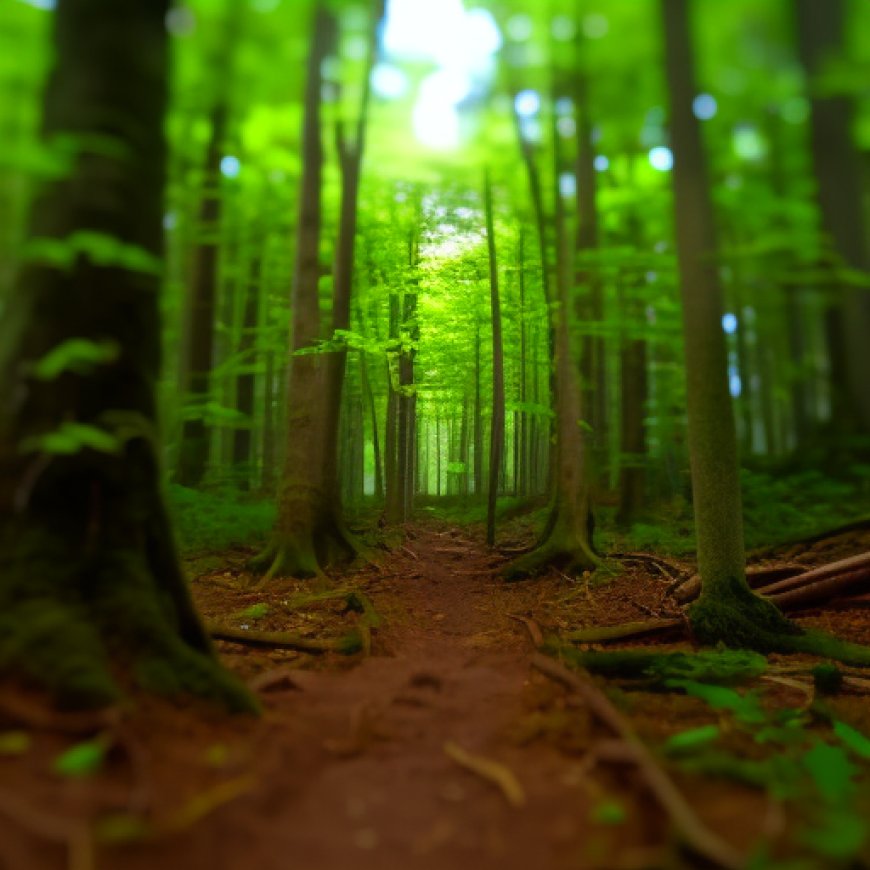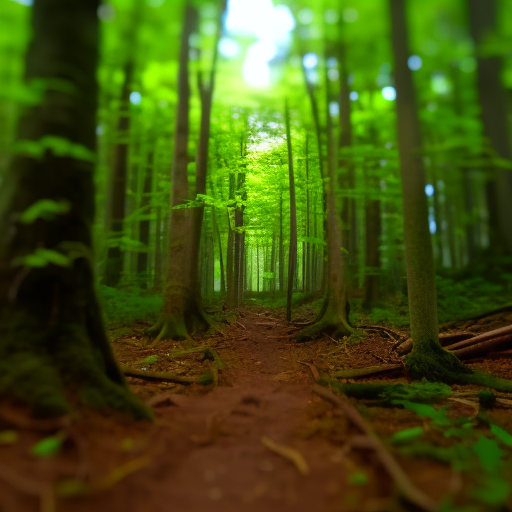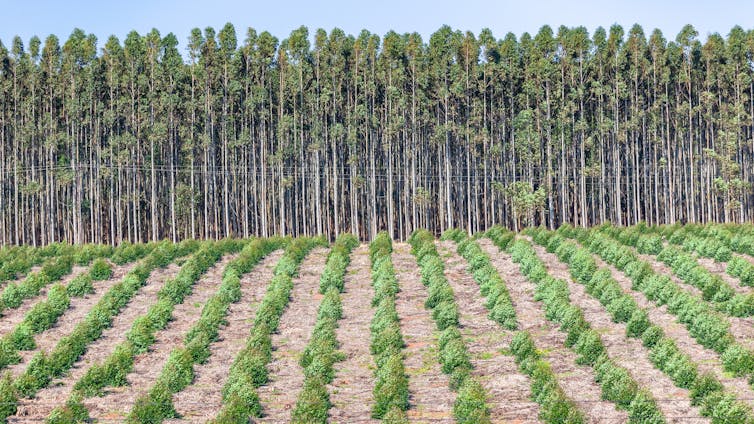The World Is Losing Forests, But Some Are Actually Growing Larger
The World Is Losing Forests, But Some Are Actually Growing Larger ScienceAlert


Forests are Breaking Up in the Tropics but Coming Together Elsewhere: Here’s What it Means for Wildlife and the Climate
In 2015, research on global forest cover revealed a concerning fact: 70 percent of the world’s remaining forest now lies within 1 kilometer of the forest’s edge. This process, called fragmentation, is causing the deepest and darkest parts of the world’s forests to shrink.
Forest fragmentation is bad news for many unique animal and plant species that rely on these forests for their survival. It also reduces the forest’s ability to capture and store carbon, which is an important part of tackling climate change.
Mapping Changes in Global Forest Fragmentation
Researchers from Fudan University in China recently conducted a study that mapped changes in global forest fragmentation between 2000 and 2020. Their results show that the most biodiverse forests on the planet – those found in the tropics – continue to suffer increasing fragmentation, mainly due to clearance for agriculture.
However, the picture is different in certain boreal, temperate, and sub-tropical regions. In particular, patches of forest in western Canada, western and far-eastern Russia, and central and southern China seem to be coming together.
Less fragmentation should, in theory, benefit forest biodiversity and increase carbon removal. But the outcome ultimately depends on the type of forests that are regrowing or being planted. It’s unclear from the study whether the regrowth consists of single-species plantations for timber or bioenergy, or if it’s natural regeneration.
Different Biodiversity and Carbon Storage
A different study in 2022 shed some light on the situation. It highlighted the presence of large areas of planted forest in temperate and boreal regions, alongside natural regenerated forests with signs of human management such as logging.
These forests host very different biodiversity to natural, old-growth forests, and are less effective at storing carbon.

Chris Van Lennep Photo/Shutterstock
Measuring a Forest
The new study classifies forests only by tree cover – defined as a 30- by 30-metre pixel on a satellite image, where more than 50 percent of the pixel area is covered with trees that are over 5 meters tall. This is a common way to identify forests but has a limitation: it doesn’t distinguish between different forest types.
In the tropics, for example, this analysis would treat an intact rainforest and a mature Hevea brasiliensis rubber tree plantation as the same thing. But they have different biodiversity, ecosystem functions, and capacity for carbon drawdown and storage.
Rubber tree plantations, for example, support far fewer (and different) plant and animal species than natural tropical forests. In fact, a study conducted in the Mekong region of south-east Asia found that, in most cases, monoculture rubber plantations harbor less than half the plant- and animal-species richness of natural forest.
Capturing the cyclical patterns of forest clearance and planting in such an analysis is also difficult. Demand for timber and wood for biofuel is increasing, so there might have been recent growth in tree planting, and now these trees could be reaching maturity.
However, this growth is part of a cyclical felling process, so it may not indicate a long-term trend. As these plantations mature, forests may once again become fragmented.
Why are Forests Being Lost or Gained?
Understanding the reasons behind forest loss or gain is also challenging. The Fudan University study found that wildfires were linked to increased forest fragmentation in both the southern Amazon and central Siberia. But the reasons for these fires are probably very different and can often be complicated.
In central Siberia, unusually high temperatures have led to forest fires in recent years. Some of these fires may start in agricultural areas, but
SDGs, Targets, and Indicators
| SDGs | Targets | Indicators |
|---|---|---|
| SDG 15: Life on Land | Target 15.1: By 2020, ensure the conservation, restoration, and sustainable use of terrestrial and inland freshwater ecosystems and their services, in particular forests, wetlands, mountains, and drylands, in line with obligations under international agreements. | Indicator 15.1.2: Proportion of important sites for terrestrial and freshwater biodiversity that are covered by protected areas, by ecosystem type. |
| SDG 13: Climate Action | Target 13.2: Integrate climate change measures into national policies, strategies, and planning. | Indicator 13.2.1: Number of countries that have integrated mitigation, adaptation, impact reduction, and early warning measures into their national policies, strategies, and planning. |
1. Which SDGs are addressed or connected to the issues highlighted in the article?
SDG 15: Life on Land
The article discusses the impact of forest fragmentation on biodiversity and the ability of forests to store carbon. SDG 15 aims to ensure the conservation, restoration, and sustainable use of terrestrial ecosystems, including forests.
SDG 13: Climate Action
The article mentions that forest fragmentation reduces the forest’s ability to capture and store carbon, which is important for addressing climate change. SDG 13 focuses on taking urgent action to combat climate change and its impacts.
2. What specific targets under those SDGs can be identified based on the article’s content?
Target 15.1: By 2020, ensure the conservation, restoration, and sustainable use of terrestrial and inland freshwater ecosystems and their services, in particular forests, wetlands, mountains, and drylands, in line with obligations under international agreements.
The article highlights the need to protect intact forest landscapes and prevent forest fragmentation to conserve biodiversity and maintain ecosystem services.
Target 13.2: Integrate climate change measures into national policies, strategies, and planning.
The article emphasizes the importance of considering climate change impacts and mitigation strategies in forest management and land-use planning.
3. Are there any indicators mentioned or implied in the article that can be used to measure progress towards the identified targets?
Indicator 15.1.2: Proportion of important sites for terrestrial and freshwater biodiversity that are covered by protected areas, by ecosystem type.
The article discusses the impact of forest fragmentation on biodiversity, indicating the need to measure the proportion of important forest sites that are protected to assess progress towards conserving terrestrial ecosystems.
Indicator 13.2.1: Number of countries that have integrated mitigation, adaptation, impact reduction, and early warning measures into their national policies, strategies, and planning.
The article highlights the importance of integrating climate change measures into national policies and planning to address the impact of forest fragmentation on carbon storage. This indicator can be used to measure progress in integrating climate change measures into forest management strategies.
Behold! This splendid article springs forth from the wellspring of knowledge, shaped by a wondrous proprietary AI technology that delved into a vast ocean of data, illuminating the path towards the Sustainable Development Goals. Remember that all rights are reserved by SDG Investors LLC, empowering us to champion progress together.
Source: sciencealert.com

Join us, as fellow seekers of change, on a transformative journey at https://sdgtalks.ai/welcome, where you can become a member and actively contribute to shaping a brighter future.







